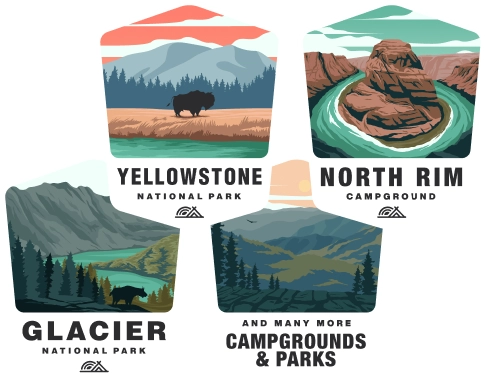Camping at Fort Ross State Historic Park
General Overview
Fort Ross State Historic Park is located in Sonoma County on the Northern California coast. It offers rich history and beautiful natural landscapes. The park is known for its historical significance due to the presence of a Russian-American Company settlement that dates back to the early 19th century. This site provides an interesting glimpse into the Russian colonization of North America.
Camping Information
Facilities: Fort Ross State Historic Park itself does not offer traditional camping facilities within the park. However, there are nearby state parks and campgrounds that provide camping opportunities. These include Salt Point State Park, which is roughly 6 miles north of Fort Ross and offers both camping and day-use areas.
Reservations: Camping reservations at nearby parks can typically be made through the California Department of Parks and Recreation reservation system or a third-party reservation service. It is advisable to book several months in advance, especially during peak season.
Types of Camping: Nearby Salt Point State Park, where you can camp, offers more than 100 campsites for tent camping, RVs (no hookups), and it has group camping facilities. There are two campgrounds to choose from: Woodside Campground located on the eastern side of Highway 1, and Gerstle Cove Campground, which is closer to the ocean.
Amenities: The campgrounds nearby generally offer basic amenities such as picnic tables, fire rings, potable water, and restrooms. Showers and flush toilets may also be available.
Activities and Attractions
Historical Buildings: Fort Ross State Historic Park features a reconstruction of the original fort built by Russian settlers, including a chapel, barracks, and blockhouses.
Visitor Center: A visitor center at the park provides historical exhibits and information about the site's history.
Hiking: Various trails around the park offer scenic vistas of the Pacific Ocean and the rugged coastline.
Wildlife Watching: The area is rich in wildlife, including marine animals such as seals and whales, and various bird species.
Sea Kayaking: For the more adventurous, sea kayaking is popular along the coastline, with the chance to explore kelp forests and rocky coves.
Fishing: If you have a California fishing license, you can enjoy fishing from the shore or out at sea.
Tips and Regulations
Fire Regulations: Due to the risk of wildfires, campers must comply with any fire restrictions. This often means using designated fire rings and sometimes prohibitions on wood fires during high-risk periods.
Protect Wildlife: Feeding or disturbing wildlife is prohibited, and visitors are encouraged to observe animals from a safe distance.
Preservation of Historic Sites: Do not collect artifacts, and respect all structures and natural resources in the park.
Pets: Pets are usually allowed in campgrounds but must be kept on a leash and are not permitted in the historic buildings or on certain trails.
Noise: Quiet hours are typically enforced from 10 pm to 6 am in all campgrounds to ensure a peaceful environment for all visitors.
Leave No Trace: Always pack out what you pack in, and leave the park as you found it for others to enjoy.
Please note that the specifics about camping, regulations, and activities can change based on park management decisions and environmental considerations. Always check with the California Department of Parks and Recreation or the park's official website for the most current information before planning your visit.
